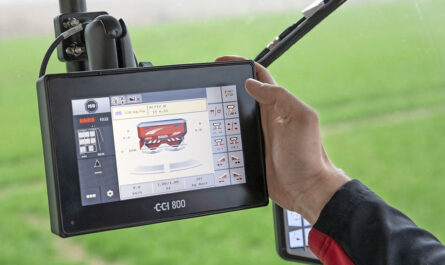Multiple Input Multiple Output (MIMO) Technology: Key to Next Generation Wireless Communication
Multiple Input Multiple Output or MIMO technology utilizes multiple antennas at both the transmitter and receiver to improve communication performance. By using this approach, MIMO can provide significant increases in data throughput and link range without additional bandwidth or transmit power. It is a key technology in modern wireless communication standards such as LTE, 5G, and Wi-Fi.
How MIMO Works
MIMO works by exploiting the multipath nature of wireless signal propagation. It uses the spatial domain in addition to the conventional time and frequency domains to increase capacity. The basic idea is to transfer independent data signals through spatially separated antennas to achieve higher spectral efficiencies.
At the transmitter, the data stream is split into multiple sub-streams and each sub-stream is transmitted from a different antenna in the same frequency band. At the receiver, each receiving antenna will receive a combination of all the transmitted sub-streams attenuated by the channel frequency responses between each transmit-receive antenna pair. By using sophisticated signal processing algorithms at the receiver, the independent sub-streams can be recovered.
Compared to single-input single-output systems, MIMO significantly increases the throughput of the radio link without consuming additional bandwidth or transmitting power. The capacity scales nearly linearly with the minimum of the number of antennas at the transmitter and receiver. For example, a system with 4 transmit and 4 receive antennas theoretically provides a capacity gain of 4 times compared to SISO.
Key Technologies Behind MIMO
For MIMO to realize its full potential, several key enabling technologies must be utilized:
Spatial Multiplexing – As mentioned, this involves transmitting independent data streams from each of the multiple transmit antennas. This allows dividing the total data stream into parallel sub-streams, multiplying overall throughput.
Beamforming – Smart antennas can be used to focus energy in a particular direction to achieve a stronger signal in that direction. This enables improved range.
Interference Cancellation – Sophisticated algorithms are used at the receiver to distinguish between the multiple signals arriving via different paths. This enables utilizing interference constructively rather than treating it as noise.
Channel State Information – For the receiver to recover the separate signals, it needs knowledge of the propagation environment (i.e. channel state information). Feedback mechanisms are used to send channel estimates back to the transmitter.
Joint Encoding/Decoding – Advanced signal processing jointly encodes the data at the transmitter and jointly decodes it at the receiver, taking advantage of the different channel responses between all transmit-receive antenna pairs.
Precoding – A precoding scheme is applied at the transmitter to distribute the transmit power optimally across antennas such that signals add constructively at the receiver antennas.
These diverse techniques work together synergistically to realize the promised capacity increase of MIMO systems.
Applications and Standardization
Due to the dramatic performance gains it offers, MIMO has been widely adopted in wireless systems including:
LTE and 5G Networks – MIMO is a fundamental part of LTE and new 5G standards utilize advanced transmission modes like massive MIMO to achieve gigabit throughput.
Wi-Fi – Modern Wi-Fi devices use MIMO to deliver much higher throughput designed for media streaming and internet use cases.
Bluetooth – MIMO helps boost the capabilities of Bluetooth for applications like wireless audio streaming and wireless peripherals connectivity.
Satellite Communications – Satellite communications leverages MIMO for improved coverage and capacity on the return link from user terminals to satellites.
RADAR Systems – Synthetic aperture RADAR utilizes MIMO to achieve fine angular resolution for air traffic control and ground surveillance applications.
Most major standards-setting organizations like 3GPP, IEEE, WiMax forum have published detailed specifications regarding optimal implementation of MIMO techniques under different channel conditions and system constraints. MIMO continues to evolve to support new and emerging wireless technologies.
In summary, MIMO represents a major technological breakthrough that translates spatial diversity of wireless channels into increased capacity. By utilizing multiple antennas both at the transmitter and receiver, it is able to achieve significant throughput gains without any additional resources. This makes MIMO a core component of almost all modern and next-generation wireless systems. With continued advancements in areas like massive MIMO and millimeter wave communications, MIMO will remain crucial to support the insatiable demand for higherwireless data rates.
Note:
1. Source: Coherent Market Insights, Public sources, Desk research
2. We have leveraged AI tools to mine information and compile it




